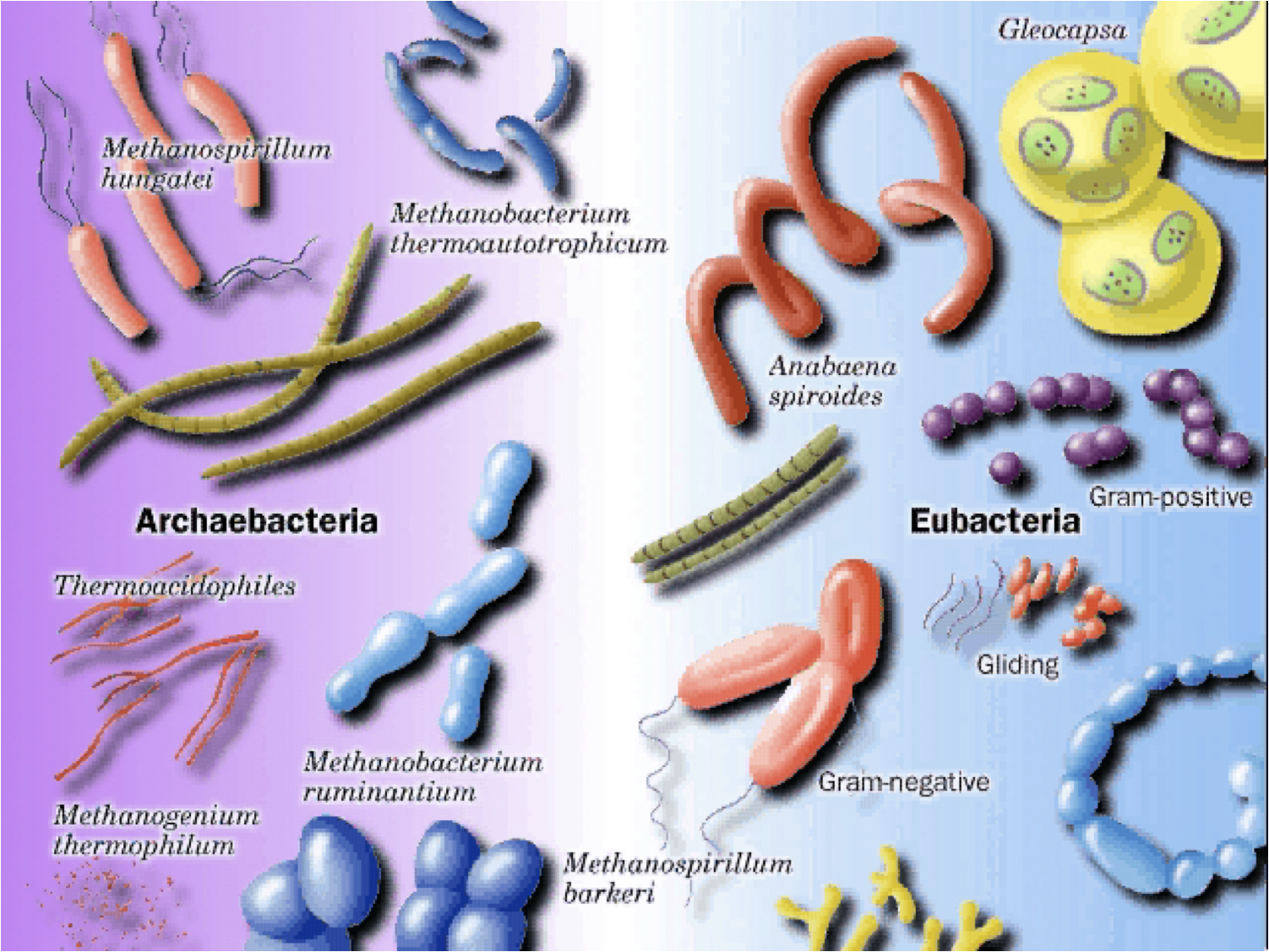Archaebacteria are among the most ancient life forms on Earth, thriving in some of the most extreme environments. These microorganisms are distinct from bacteria and eukaryotes, representing a separate domain of life that has adapted to survive where few other organisms can. From the depths of the ocean to the hot springs of Yellowstone, archaebacteria are a testament to the resilience of life and its ability to evolve in harsh conditions.
What sets archaebacteria apart is not just their survival tactics but their unique biochemical processes. These organisms often utilize alternative energy sources and exhibit characteristics that are more closely related to eukaryotes than bacteria. Understanding the various examples of archaebacteria can provide insight into the early forms of life on Earth and the potential for life on other planets.
The study of archaebacteria is not only fascinating from a biological standpoint but also crucial for biotechnology and environmental science. With their ability to produce methane and other byproducts, these microorganisms play a vital role in the ecosystem and can be harnessed for sustainable energy solutions. In this article, we will explore several intriguing examples of archaebacteria, their characteristics, and their significance in various fields.
What Are Archaebacteria?
Archaebacteria, or archaea, are single-celled microorganisms that differ significantly from bacteria. They have unique cell membranes, genetic structures, and metabolic pathways, making them essential for understanding the tree of life. Archaebacteria are categorized into several groups based on their living conditions and metabolic processes.
What Are the Main Types of Archaebacteria?
The major types of archaebacteria include:
- Halophiles: Salt-loving microorganisms that thrive in high-salinity environments.
- Thermophiles: Heat-loving archaebacteria found in hot springs and hydrothermal vents.
- Acidophiles: Acid-loving organisms that can survive in extremely acidic conditions.
- Methanogens: Archaebacteria that produce methane as a metabolic byproduct, often found in anaerobic environments.
What Are Some Examples of Archaebacteria?
Let’s delve into some specific examples of archaebacteria, each with its unique adaptations and habitats.
1. Halobacterium salinarum
One of the most well-known examples of archaebacteria, Halobacterium salinarum, thrives in highly saline environments such as salt lakes and salt flats. This microorganism is known for its ability to endure extreme salt concentrations, utilizing unique proteins to maintain cellular function.
2. Pyrococcus furiosus
Pyrococcus furiosus is a thermophilic archaebacterium found in hydrothermal vents and hot springs. It can survive at temperatures up to 100 degrees Celsius (212 degrees Fahrenheit) and is studied for its heat-stable enzymes, which have applications in biotechnology and industrial processes.
3. Methanococcus maripaludis
This methanogen, Methanococcus maripaludis, is found in marine sediments and is known for its ability to produce methane. It plays a crucial role in the carbon cycle and is of particular interest for its potential use in biofuel production.
4. Aciduliprofundum boonei
Aciduliprofundum boonei is an acidophilic archaeon that thrives in extreme acidic environments, such as those found in some geothermal vents. Its unique adaptations allow it to survive in conditions that would be inhospitable to most other forms of life.
How Do Archaebacteria Contribute to Their Environments?
Archaebacteria play essential roles in their ecosystems. They contribute to nutrient cycling, particularly in extreme environments. For instance, methanogens are critical in the anaerobic breakdown of organic matter, releasing methane, a potent greenhouse gas.
What Are the Biotechnological Applications of Archaebacteria?
The unique characteristics of archaebacteria have led to various biotechnological applications, including:
- Enzymes from thermophiles are used in industrial processes, such as DNA amplification in PCR.
- Halophiles are being explored for their potential in bioremediation of saline environments.
- Methanogens are studied for biofuel production through anaerobic digestion.
What Is the Future of Research on Archaebacteria?
The future of research on archaebacteria looks promising as scientists continue to uncover their potential applications and ecological roles. Advances in genetic sequencing technologies have opened new avenues for exploring the diversity and functions of these microorganisms, which could lead to groundbreaking discoveries in medicine, environmental science, and energy production.
Conclusion: Why Are Examples of Archaebacteria Important?
In summary, examples of archaebacteria showcase the incredible diversity and adaptability of life on Earth. Understanding these microorganisms not only sheds light on the origins of life but also provides insights into sustainable practices and biotechnological advancements. As we continue to explore the unique capabilities of archaebacteria, we may find solutions to some of the most pressing challenges facing our planet today.
You Might Also Like
Exploring The Best Of Top Historical FictionGiggles In A Minute: The Best Short Jokes For Quick Laughs
Creating The Perfect Formal Dining Room: A Guide To Elegance And Style
Achieving 0 Body Fat: The Ultimate Goal Or A Myth?
Rye Whiskey Cocktails: A Journey Through Flavor And Tradition
Article Recommendations
- Eros Philadelphia
- Karrueche
- Joe Metheny
- Sophierain Nudes
- Melissa Sue Anderson
- Julio Jose Gonzalez
- King Von Autopsy Results
- Diddy And Justin Bieber
- Dingdong Dantes Height In Cm
- Peachykai


